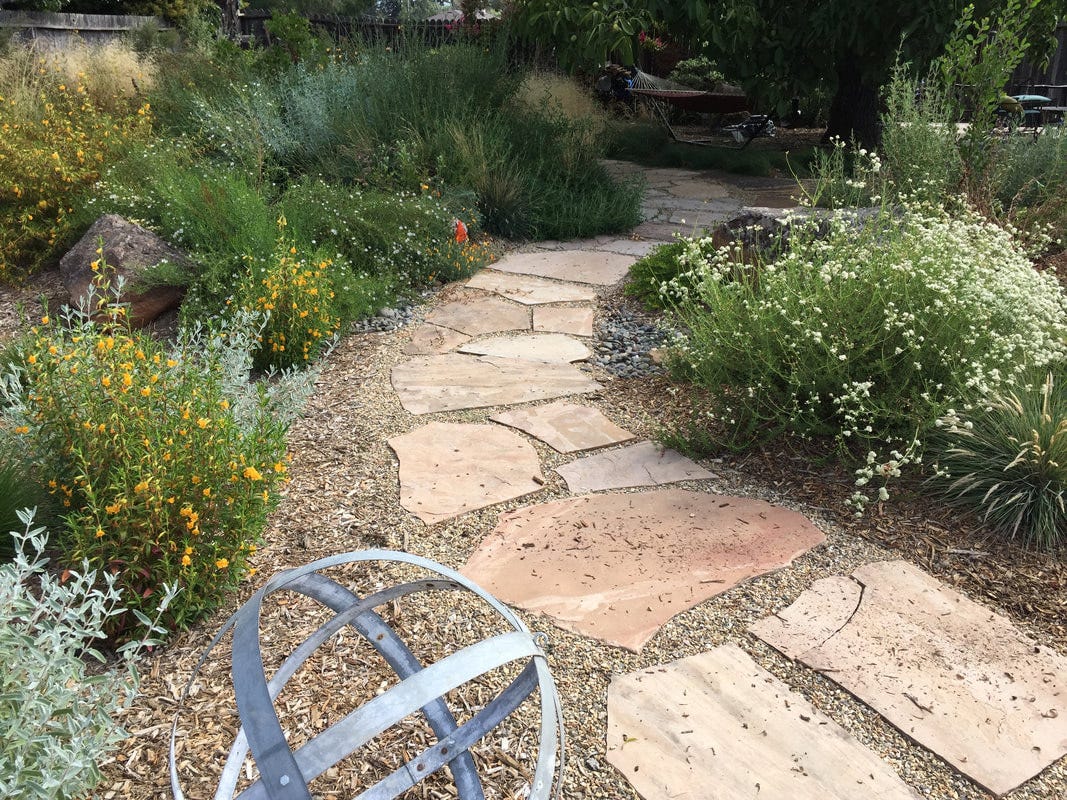Firewise: Gardening With Wildfires in Mind
A much requested repost of an article from virensstudio.com (June, 2022). In light of the recent and unprecedented wildfire season this year.
In an age where wildfires have become a yearly occurrence, a few thoughtful choices in the garden can make all the difference to your property.
"Depending on the fire, one fire engine may be responsible for three or even a dozen homes. It’s also possible that they may not be allowed to utilize water from a hydrant system, as that could endanger lives that are depending on the water pressure further up the line. The reality of it is that structural firefighters will “triage” the buildings they are responsible for. If they can all be saved, great. If allocating time and resources for one home could endanger three others, it’s possible the first one will be written off. It’s a tough call, but all too often necessary."
"The more defensible and prepared your house is, the more likely the firefighters will devote resources to it simply because it’s a battle they can win."
So, call it what you will: firewise, fire-resistant, fire safe, fire smart or firescape, let's take a deep breath and talk landscaping in that space where wild meets residential as a way to give you some piece of mind that your home and property is prepared, should the worst happen.
Thoughtful Design
First of all, all the usual elements of great garden design still apply. You should always consider the general climate, exposure and conditions of the area that you're in. Also look at the property itself and conduct a site assessment. Check out the soil conditions, drainage and topography, and of course list your priorities of use. Every part of the space should be thoughtfully tailored to meet your needs. From how you want to feel in the space and what you want to do in it, to how much time and energy you have for maintenance.
If your home is in a wildfire zone, there are some extra added considerations. You'll want to calculate the possible risks first. For instance, is the property on or near a slope? in a valley? How does the wind move through the area? is it common to have high winds in fire season? As these can all effect how a wildfire can behave and what kind of threat might be attached to your home.
It also pays to ask others. What have the last few years/decades brought to the area in terms of fires? Are there bylaws or rules to consider? Is there a local controlled burn program? or a neighbourhood fire safety committee? There's a great deal to be gained by checking in with your neighbours, municipality and local fire service. Also, local garden designers and nurseries are a great source for helpful tips or planning materials, like plant lists and plans that are adapted to your specific area in addition to plant material, seeds and tools.
Once you have all of your initial information gathered and ideas for your garden space in mind, you can start to view your property from the added perspective of fire safety.
"Defensible space is the buffer you create between a building on your property and the grass, trees, shrubs, or any wildland area that surround it. This space is needed to slow or stop the spread of wildfire and it helps protect your home from catching fire—either from embers, direct flame contact or radiant heat."
A great way to create a defensible space around your home is to think of your landscaping in zones. Start with your home in the centre and then work your way out. The trick is to consider any possible sources of fuel that could feed a wildfire. I know it may sound daunting, but it is possible to build a garden that both suits your needs, and has the hidden function of added fire safety.
Center - Home
If you are able to, consider using non-combustable building materials for roofs, siding and other exterior areas. Build carports, sheds and decks away from the main building and close in open undersides or separate them from the house by adding inorganic firebreaks like walls. Install extra exterior water hook ups and larger diameter water piping. "Half-inch pipe is only capable of flowing a dozen or so gallons each minute. A 1 inch pipe can flow 4 times that amount". If you have a pond or lake nearby, dry fire hydrants may be an option (be sure to check with your local fire service). Also keep your gutters clear and your shed stocked with a roof-height ladder plus shovels, rakes and plenty of extra garden hose.
Zone 1 - 10m (30') Radius
Remove any combustable materials from this area. Stick to plant material with broad or succulent leaves that hold moisture and grow less than 60cm (2') tall. Keep any debris to a minimum and don't allow your plants to dry out completely. A good irrigation schedule is a must, infrequent but deep watering is adequate for most waterwise plants through the heat of summer. Use inorganic materials for pathways and mulches (including under decks, especially those attached to buildings). Rock and gravel, crushed concrete and reclaimed bricks all add lots of texture and interest with good water permeability. Trees are ok but should be used sparingly and limited to hardwood varieties that can be pruned well away from buildings. You'll also want to choose an area outside of this zone for firewood and fuel tank storage, compost bins and the like.
Zone 2 - 30m (100') Radius
Keep combustable materials to a minimum. Here you can add more perennial plants in islands or groupings with 3m (10') spacing between them. Wide paths, low walls and boulders are all great choices to add transitions, levels and extra seating to the design while creating breaks that can help slow a fire. Avoid woody shrubs and large dense clumps of ornamental grasses. Stick to open hardwood trees that are spaced well apart.
Zone 3 - 180m (600') Radius
Continue to use wide paths, retaining walls and other hardscape to separate larger plantings. Keep tree branches lifted off the ground at least 3m (10') with only short ground covers underneath. If materials like shrubs are planted under low hanging branches they can create a 'ladder' effect that will carry fire up into tree tops. Be aware of slopes as fire can move swiftly up them, be sure to space trees and shrubs accordingly (the greater the slope the wider the spacing).
Hardscape
Hardscape is a great way to surround planting islands; adding visual interest and utility to landscaping, all while creating the unique look and feeling that you're looking for. The good news is that there has never been a greater variety of inorganic materials available than right now. From industrial corten steel and concrete to traditional dry stack stone walls, gravel and sand there is something out there that will speak to you. Recycled and reused materials are also a great choice: crushed concrete, reclaimed brick and tile plus all kinds of found objects will add an artistic and environmentally positive vibe. Metal is also a great option for seating, trellises and arbours; while ceramic containers elevate garden colour. And of course don't forget water, from ponds to reflecting dishes and small bubblers, it is essential for wildlife habitat, movement and sound in the garden.
Permeable materials are important to channel and absorb water in wetter months. While, different levels in garden topography will create not only greater interest but improved drainage and/or water retention depending on whether you include raised beds, mounds or swales. Rain barrels and ponds are also helpful to store water for use in the dry season.
Hardscape elements are the bones of your garden, they highlight special features, lead users through the space and help to make sense of their inclusion in it. Additionally, its functions can extend to include firebreaks, access routes and modes of water distribution. All of these functions are important pieces of great garden design, but they don't have to be obvious.
Plants
These are the heart of your garden, they add life, fragrance and movement but should be thoughtfully chosen. They should meet the conditions and needs for your space, including fire safety.
There is currently no standardized system of fire rating for plant material. So rather than listing good or bad plants, think about them in terms of their characteristics. Consider where they are being placed and how they are going to be maintained. It's also important to build a diverse plant community, provide habitat and protect soil as part of holistic garden health. So, keep these things in mind when you start to make up a plant list.
Say YES to:
open growth habits
hardwood trees
broad leaves
silver-grey foliage
succulents
ground covers that will hold moisture and nutrients
xeriscape and waterwise plants (always a yes!)
Say NO to:
resins, waxes and oils
material that's prone to shedding or collecting debris
thick peeling bark
conifers
dry dense grasses
A few great choices - Zone 4 or lower


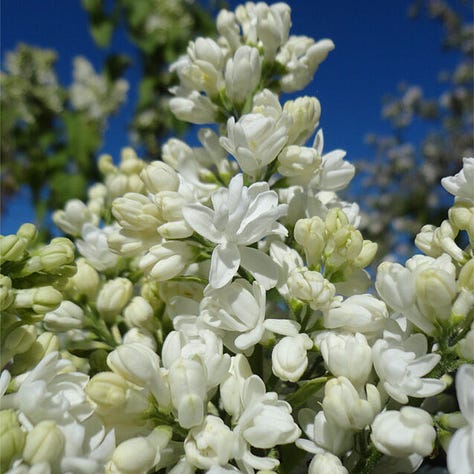
Cercis canadensis (Eastern Redbud) - Gorgeous early spring blooms plus lovely heart-shaped leaves all summer.
Ginkgo - Warm yellow fall colour and unique leaves. So many dwarf and variegated varieties to choose from.
Syringa vulgaris (Lilac) - Spring fragrance like no other, 'Mme Lemoine' is a particularly beautiful double white variety.
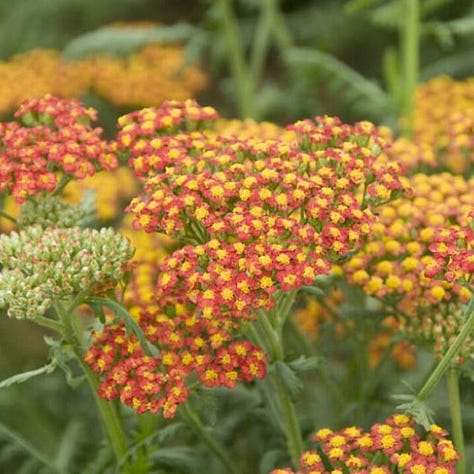


Achillea (Yarrow), Nepeta (Catmint) and Salvia - Three pollinator powerhouses that look fantastic planted in large drifts.
Aster - Fall flowering bee magnets.
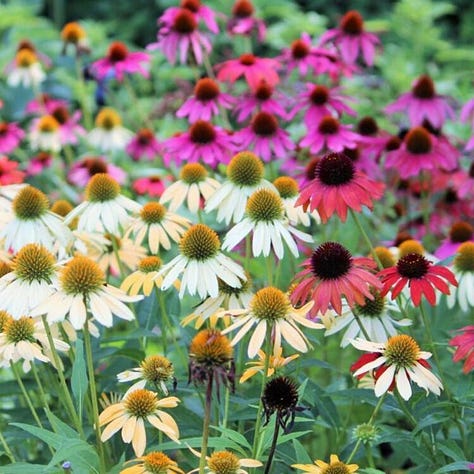


Echinacea (Cone flower), Armeria (Sea thrift) and Ratibida (Prairie cone flower)- Killer cone flowers, small but tough mounds and tall dancing Mexican hats.
Kniphofia (Red hot poker) - Evergreen leaves that look grassy, plus their famous flowerheads.

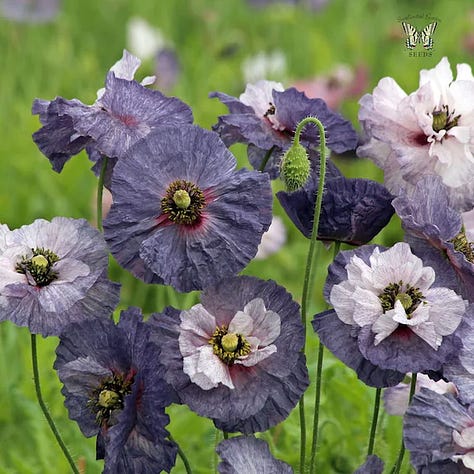

Lupinus (Lupine), Papaver (Poppy) and Allium (Ornamental onion)- Two easy seeds to direct sow for amazing colour and a summer flowering bulb that is beyond eye-catching.
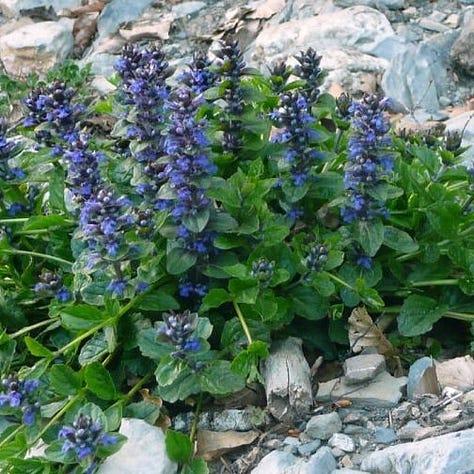


Ajuga reptans, Sedum and Thymus - Three grand ground covers to add colour and texture.



Bouteloua, Carex and Salix (Willow) - Eyelash grass, diminutive grassy tufts and gorgeous willowy mounds to bring movement to the space. These plants can help trap embers, keeping them from blowing onto buildings.
As we all know, every little bit helps, so do what you can with the resources that you have and above all, enjoy your garden with some assurance that you are as prepared as you can be during the next wildfire season. We all look for spaces that can function on as many levels as possible, so why not include fire safety in the equation?
For more information:
FireSmart BC landscaping Guide
Backwoods Home Magazine article
FireSmart Guide to Landscaping
Sara-Jane & Alicia from Virens Studio
Virens is a studio located in Vancouver, Canada that specializes in ecological planting design, urban greening consultation and hort writing. Please get in touch today so that we can help you bring some green to your city. And, don't forget to follow us @virensstudio on Instagram.











